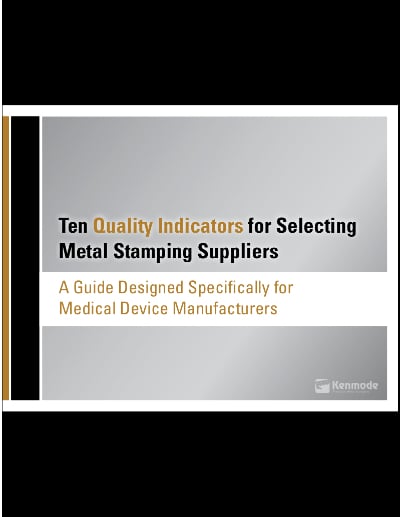This is the seventh in Kenmode's blog article series entitled "10 Metal Stamping Quality Indicators for Medical Device Manufacturers" to help medical device manufacturers evaluate the level of quality in their metal stamping suppliers. The series will consist of 10 articles, published weekly. Each article will focus on a single quality indicator.
According to the FDA’s “Device Advice” for medical device manufacturers, “Change control is a complex process. Failure to have an adequate change control system can cause equally ‘complex’ results. Inadequate change control exposes a company to product liability actions, results in product recalls, causes internal confusion, and is a serious violation of the Quality System (QS) regulation.”
The FDA notes that the change control process involves:
- Identifying the need for change
- Making, evaluating and reviewing the change in the product or process
- Revising and distributing documents to support the change
- Implementing the change correctly
- Evaluating the implementation through quality assurance review
- Monitoring the changes through device history
- Ensuring that only the approved product is distributed, used or installed
A metal stamping firm should have a change control process in place to ensure that no change is made without advance notice and client approval. The metal stamping firm should provide change planning and validation/qualification to ensure quality and address risk management issues well in advance.
Potential changes that may affect metal stamping suppliers include:
- Product design
- Components
- Processes
- Materials
- Suppliers
- Manufacturing or test equipment
- Facilities
- Packaging
Read the entire blog series to learn more about the 10 Quality Indicators for Selecting Metal Stamping Suppliers:
Indicator #1 - Top Management Commitment and Company-Wide Engagement in Quality
Indicator #2 - Adherence to Global Quality Standards ISO 9001 and ISO 13485
Indicator #3 - In-House Engineering, Design, and Tool Build Expertise
Indicator #4 - Risk Management for Complex Products


